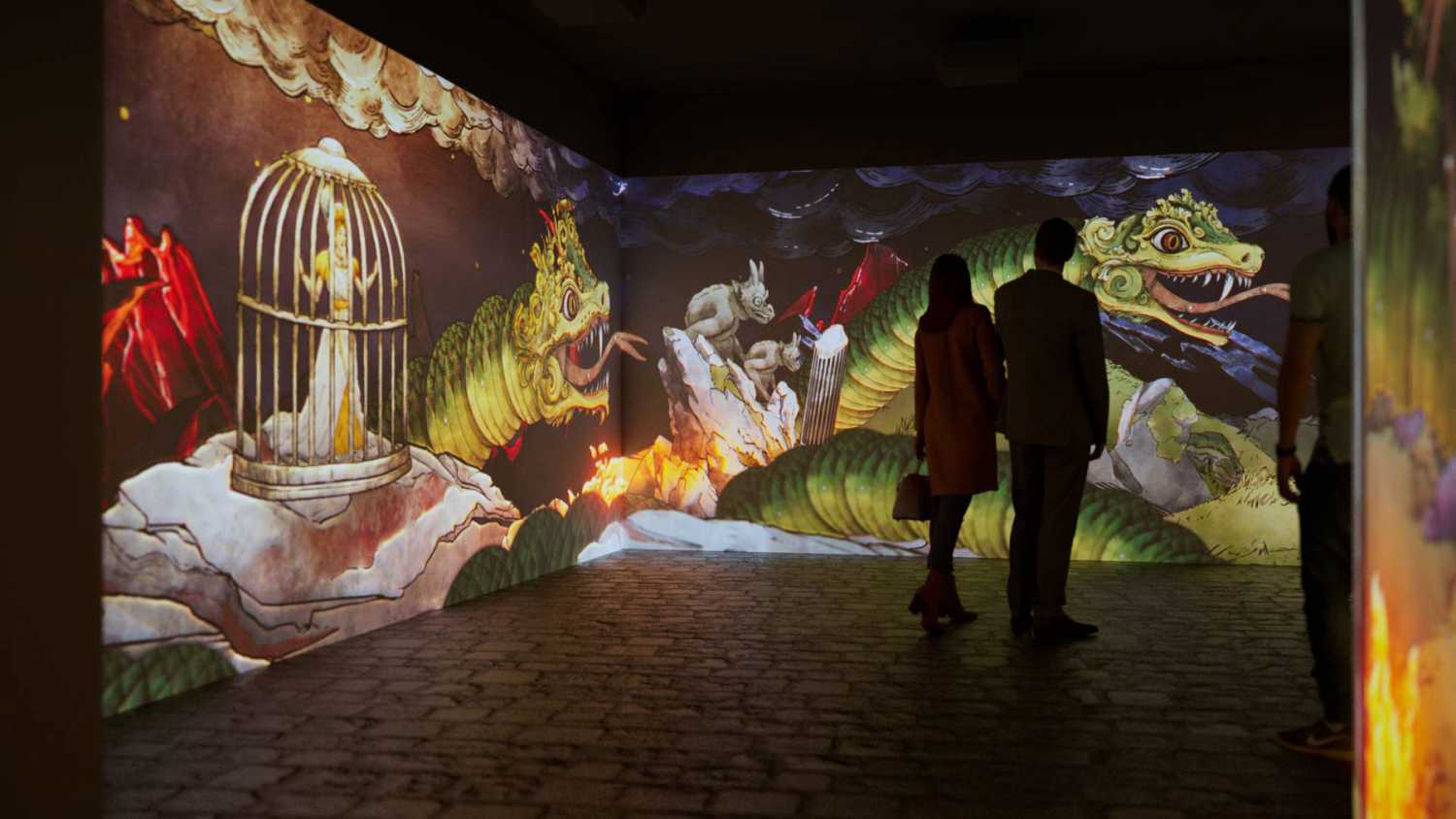Mythos Mozart in Vienna inspires with Pixera
- Details

The timeless beauty of the musical genius’s legacy meets the latest audio-visual technology, with this process becoming a work of art in its own right that succeeds in entertaining both young and old.
“Mythos Mozart connects tradition with modernity, art and music, creativity with technology and creates a new space for innovation and culture to honour Mozart in a way that’s never been seen before,” explains Mythos Mozart managing director Hans Gasser.
Mythos Mozart enchants and informs across more than 1,500sq.m, at precisely the same location where the composer, who was born in 1756, spent the last year of his life and created unforgettable masterpieces like The Magic Flute. Nowadays the STEFFL department store can be found here.
The exhibition consists of five different rooms (‘Mozart’s world') that each offer a distinct access point to Mozart’s body of work and general legacy.
Equipped with a ticket and QR code, each visitor has their photo taken at the beginning of their audio-visual journey. Within two seconds, the photos are turned into digital 3D portraits with the ability to wink back at the visitor and to jump from one picture frame to the next.
The general soundscape, indispensable for the overall experience of the exhibition, was composed and re-arranged by musical director, Walter Werzowa. Mozart’s original compositions were newly recorded by tomorrow’s stars, students of the mdw – University of Music and Performing Arts Vienna, as part of an exclusive partnership.
Vienna-based music and digital media expert Christoph Widauer was responsible for the overall concept, the dramatic structure, compiling the content and the general realisation of Mythos Mozart.
Austrian company PKE Electronics took on the role of technical service provider and installer, with Martin Nikendei as project manager.
To live up to the naturally high expectations regarding the music and sound quality, a total of 300 loudspeakers were installed, both ceiling and wall mounted, with additional speakers on the ground.
The largest number of speakers employed by far came from audio manufacturer QSC (AC-S6T, AD-S8T, AD-S10T, AP-212SW). Corresponding QSC power amplifiers (CX-Q8K8 und CX-Q4K8) supported the setup and received their signals via QLan from two QSC Core 510i audio processors.
Two of the exhibition rooms feature active acoustics from Amadeus Acoustic.
To meet the special requirements of the exhibition rooms, 46 DPA microphones were used to make the room acoustics, for example, appear authentically church-like.
Pixera media server systems from AV Stumpfl were employed as the main video playback system. A total of eight Pixera two and three Pixera one servers were installed to reliably handle the large amount of video content and data.
PKE project manager Martin Nikendei comments on the use of Pixera: “We do ask a lot of the servers, since our content updates can be rather large. My team and myself like the general interface philosophy very much; it is an intuitive and very reliable system."
AV Stumpfl managing director Tobias Stumpfl comments, “To be able to contribute to the successful realisation of an exhibition with such a quintessentially Austrian topic is particularly wonderful for an Austrian family business like ours. In our family, music has always played an important role. My mother plays the cello in an orchestra, my father plays the piano and is an organist, and my sister is a violin maker and also plays the cello. During my youth I learned to play the violin, but only play the piano these days. To be able to make Mozart’s legacy come to life with Pixera is a great honour.”
In terms of the projectors used, PKE chose Epson products. Next to four smaller EB-L635SU, 21 EB-PU1007B projectors and 14 new EB-PU2216B were installed.
Due to spatial limitations, mainly ultra-short throw (UST) lenses were used, in addition to some standard focal lengths. A total of six deflection mirrors turned the floor of one of the exhibition’s rooms into an additional projection surface.
Multiple Samsung monitors were also used in the realisation of the exhibition: seven QM85R 85”, nine QM55R 55” and a 43” and 32” model each.
The video transmission was implemented by using CYP HDBaseT-transmitters which can each transmit 4K content.
Twenty Leia LumePads were used for the creation of the interactive music station, with Ultraleap 3Di tracking cameras as part of the control solution. The general system control was created and programmed by PKE via a Linux computer.
“We hope that this wonderful exhibition will help people from all over the world to discover and explore the myth that is Mozart in manifold ways. Mozart in Vienna with cutting-edge technology Made in Austria is a dream come true for us as an Austrian manufacturer,” comments AV Stumpfl global marketing advisor Hans Christian Stucken.
















